My FieldStudy






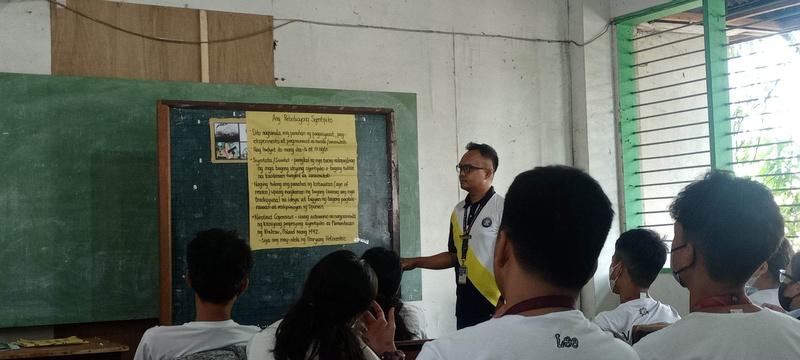

































In the tapestry of my Field Study journey and the creation of this portfolio, there are countless threads of support, guidance, and inspiration that have woven together to form a masterpiece. I would like to take this moment to express my heartfelt gratitude and appreciation to each of these remarkable individuals:
First, I would like to extend my deepest thanks to my BSEd Social Studies 3B block. Your support, camaraderie, and collaboration throughout this journey have been invaluable. I am truly grateful for our collective efforts.
I would also like to extend my sincere gratitude to my family for their unwavering emotional and financial support. Your love, encouragement, and belief in me have been a constant source of strength. I am truly blessed to have such a loving and supportive family by my side
I would like to express my appreciation to Mrs. Mercy Villegas, our teacher who guided us as class observers. Your expertise, guidance, and mentorship have been instrumental in shaping our understanding and skills in the field of education.
I am also grateful to Grade 8 Special Science Class sections Alpha and Beta for their politeness during our class observations.
I extend my thanks to Don Vicente Rama Memorial National High School for graciously allowing us to conduct our class observations at your esteemed institution. Your hospitality and support have provided us with a conducive environment for learning and professional growth.
I would like to acknowledge Mr Christopher Cabanog, our Field Study Professor, for his guidance, wisdom, and expertise throughout this endeavor. Your commitment to our development as future educators has been instrumental in shaping our pedagogical skills and understanding of the field
I am grateful to MONIKAKA, my circle of friends, for their unwavering support, laughter, and friendship. Your presence has been a source of joy and relief, making tensions and stresses melt away
Lastly, I would like to express my deepest gratitude to God. Your divine presence has provided comfort, guidance, and safety throughout our class observations. Your blessings and grace have allowed us to navigate through challenges and reach this point of completion. Without Your presence, none of this would have been possible.
Mycareergoalissimpleyetprofound:tobecomea goodeducatorIbelieveinthetransformative powerofeducationandaspiretomakeapositive impactonthelivesofmyfuturestudentsBy nurturingtheirminds,fosteringcriticalthinking,and instillingaloveforlearning,Ihopetoempowerthe nextgenerationandhelpshapeabettersociety
Greetings!IamJamaicaM Ola-a,a passionateanddedicatedindividualhailing fromtheQueenCityoftheSouth,CebuCity Currently,Iampursuingmyeducational journeyasastudentofthecrimsonandgold atCebuNormalUniversity,specializingin BSEdSocialStudies


WhenI'mnotimmersedintheworldofacademia, youcanfindmeindulginginmypersonalinterests andhobbiesIfindgreatjoyinwatchingmoviesthat transportmetodifferentworldsandinspiremewith theirnarrativesAdditionally,myadventurousspirit leadsmetoexplorenewplacesandcultures throughtraveling,openingmymindtothediversity andbeautyofourworld
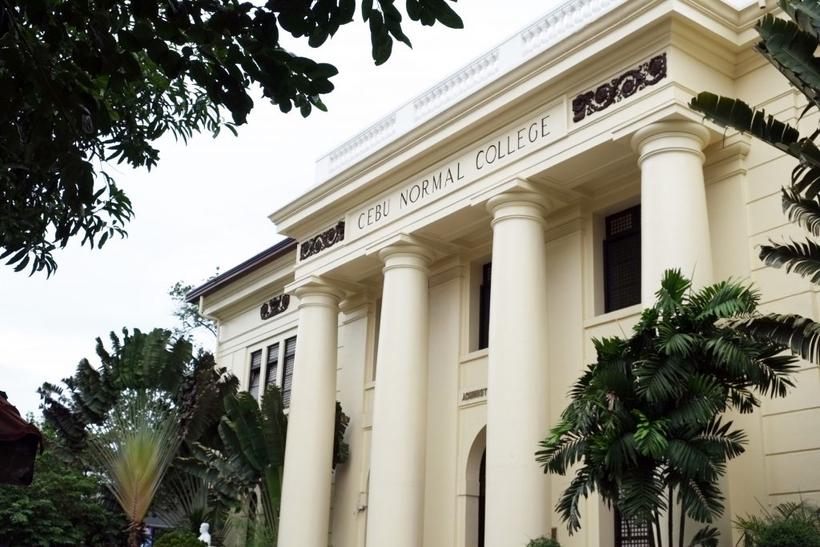



Now that you are done with your class observations for Educ 12 Field Study 2 in your assigned school, write a two paragraph essay about your beliefs on teaching and learning before and after your class observations (Pre and Post). Has your views on teaching and learning changed? Did your expectations aligned with your actual experiences? How?


Looking back on my online class observation experience in Field Study 1, the face-to-face class observation this time is indeed different. I learned, unlearned, and relearned things. My prior views on teaching strategies, and student behavior transformed. However, some of my expectations aligned with the realities of a classroom. My classroom observation experiences cleared my lenses. It clarified things that lies ahead of me. The things I learned from it prepared me as an incoming student intern.
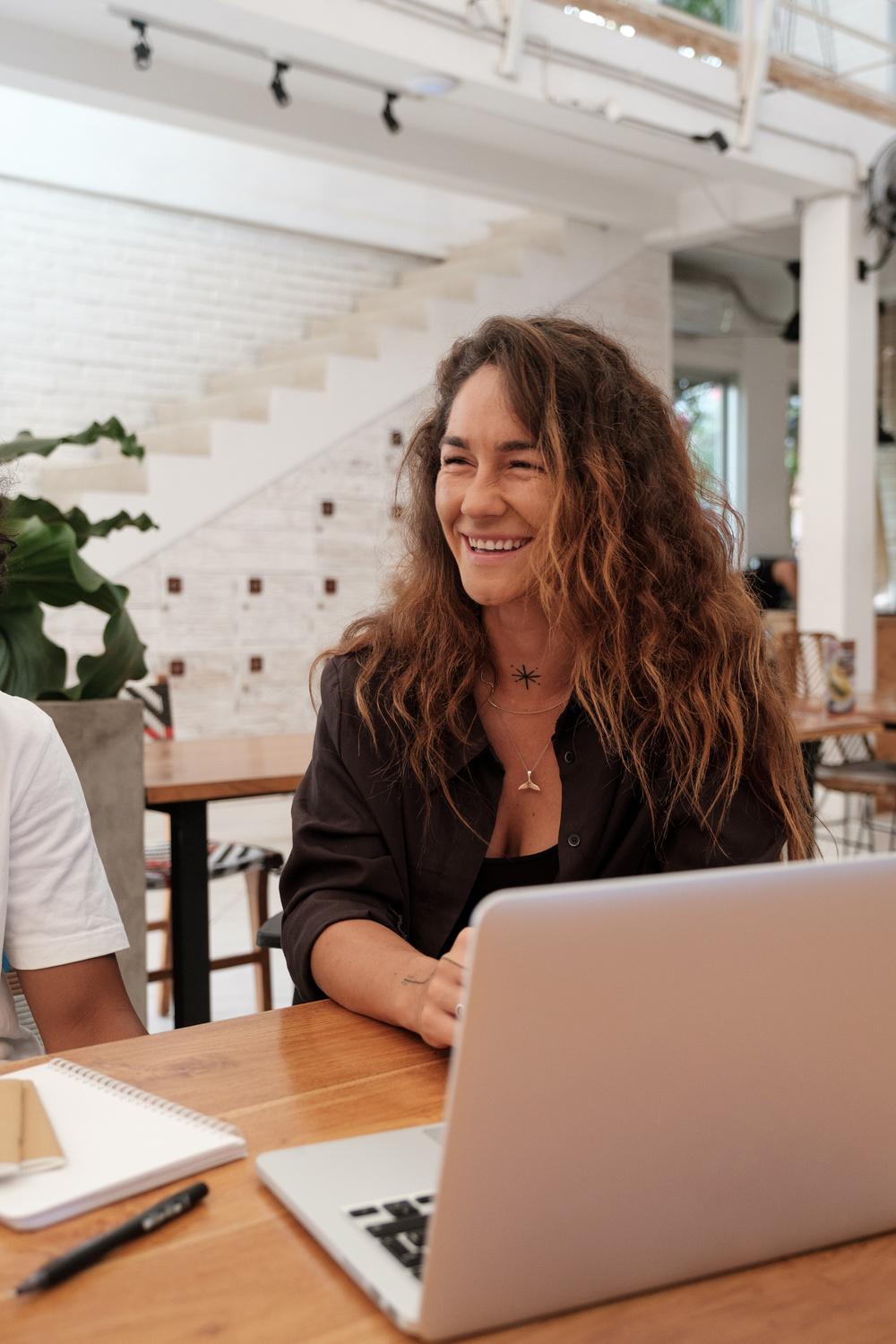
My notion that the traditional teaching method remains dominant is correct. What changed is that teachers now encourage the use of the Internet and gadgets during class activities. For instance, during a Slogan making activity, a student asked the teacher whether it would be fine to browse the internet to have ideas. The teacher willingly encouraged him. Back in my days, doing the said act would be considered as cheating. I support the use of net and devices in the classroom since with the number of students, we can’t really assist them thoroughly one by one. Integrating internet browsing empowers students to own their learning, enriches their educational journey, and prepares them for the digital age we live in.




Another expectation that matched with the actual classroom is the lagging Post-pandemic students. The teacher even shared that her students seemed to have a 2-year delayed development.

On the other hand, my view that changed is the idea that teachers should always apply engaging and fun activities. I realized that theories and concepts are often abstract and idealized. In practice, it may be difficult to design and implement highly engaging tasks. I have observed that a simple reading and worksheet activity isn’t enough for one period, how much more are those complicated tasks?

I REALIZED THAT THEORIES AND CONCEPTS ARE OFTEN ABSTRACT AND IDEALIZED

Another expectation that is far from reality is the students' behavior. Some don't really respect teachers. The best option you can do is to enforce consequences on them.


All in all, learning is a journey, and the teacher is the compass that helps guide the learner in the right direction. Just as a compass points towards true north, a good teacher helps the learner navigate through the challenges of acquiring knowledge and skills, leading them towards their destination of success.

A GOOD TEACHER HELPS THE LEARNER NAVIGATE THROUGH
 Prepared By Jamaica M. Ola-a
Prepared By Jamaica M. Ola-a
DATE: MARCH 17,2023
CLASS OBSERVED: GRADE 8 SPECIAL
SCIENCE CLASS ALPHA AND BETA
The Grade eight's Special Science class' rooms share similar size and physical features for both lie on the second floor of what the school labeled as the "Yellow building". Since the class is a special section, they only have more or less thirty students which make the classroom feel spacious. Their wooden chairs are arranged neatly, the floor is clean and shiny. Additionally, the windows do not have a curtain which makes the lighting bright. However, both classrooms have only one fan.
Overall, the classroom is adequate to be conducive to learning. With regard to teacher-student interaction, Mrs. Villegas doesn't intimidate her students. Meanwhile, students were respectful both to their teacher and us, the classroom observers. Mrs. Villegas' teaching strategy is to conduct assessments on Fridays.

In assessing what students have learned in the Quarter 2 Aralin 2 Module 2 "Kontribusyon ng Kabihasnang Romano" , Mrs. Villegas did a dictated test. Before starting, she does classroom management first. Since the class is a special section considered brilliant, it is no wonder that the students immediately complied. The test has two parts; identification and enumeration. The students behaved throughout the test and checking of items. But I was admittedly concerned that both classes have low scores. Only a few excelled, and several passed. There were even three or more students who just got a single-digit score which is considerably low since the perfect score is 30. The test items utilized Lower Order Thinking Skills (LOTS) with most being remembering and understanding types under Bloom's taxonomy so it shouldn't be that difficult. They also have time to study since it's a routine that Fridays are assessment days. Several factors can address the said concern (a) the students are still adjusting after having been learning in 2 year virtual classes because of the pandemic, (b) belonging to a Special science class whose interests and intelligence are wired with the Science and Math, the subject Araling Panlipunan may be least of their priority in learning and (c) Mrs. Villegas teaching method needs adjustment to fit the class' needs and interest.
Indeed, the face-to-face class observation lead to new insights which are equally eye-opening to the virtual class observations I formerly experienced. Classes post-pandemic have transformed with how students are allowed to use cellphones and other digitals. Cellphones in the classroom used to be a controversial issue but now, teachers encourage the use of it. The changes of the pandemic have affected the landscape of education. One glaring post-pandemic issue is the students lagging performance. The teacher even confirmed that the said class performed lower compared to the pioneering pilot classes and she generally adjusted her instructional strategies to consider the capabilities of her students.
DATE: MARCH 24,2023
CLASS OBSERVED: GRADE 8
SPECIAL SCIENCE
CLASS ALPHA AND BETA
As mentioned previously, Fridays are usually the assessment days of Mrs. Villegas class. Instead of a dictated quiz, an individual seatwork where the class answers questions is given.

Both physical and digital resources are used by students in accomplishing Activities 1, 2, and 3 of the module. The module's content is yet to be discussed.
Usually, these activities are done as homework. But Mrs. Villegas' instructional strategy is to monitor students while doing their work. The students are silent and focused on doing their seatwork while Mrs. Villegas monitored them from time to time.
First, it is good to know that the teacher uses varied strategies. I actually feel positive about the seatwork activity since reading comprehension matters in acing it. Aside from developing students' reading skills, the activity is also a good scaffolding approach. It provided students with support and guidance as they learn new concepts and skills. They also analyzed the topic themselves first before the actual discussion with the teacher. However, during the checking, I observed one major issue- students' inability to answer with pinpoint accuracy. They lack skills in using their own words in answering. Although they got the answer correct, the majority of them copied the other unnecessary sentences. This made the checking process too long since most students ask the teacher whether their classmates' answers are correct.
In conclusion, I learned the value of differentiating instruction. Another is that time management can be difficult in actual instruction. Still, it matters to prioritize the students' questions and to rationalize the answers for them to learn even if it may cause some delays. Moreover, it is also good to encourage independent learning. Afterall, the students are the stars of the classroom and the teacher is the director that guides them to showcase their best shot.
DATE: MARCH 31,2023
CLASS OBSERVED: GRADE 8
SPECIAL SCIENCE CLASS
ALPHA AND BETA
this Friday's Araling Panlipunan (AP) class, instead of administering the assessment, Mrs. Villegas continued the reporting activity. Group 3 was tasked to report on the Industrial Revolution. There was only one representative who reported. The student had a visual aid in the form of Manila papers full of text. But before the reporting, Mrs. Villegas did a recall of the previously reported topics to establish a connection.
Her recall strategy is done through lectures. After which, the activity then proceeded where the reporters merely read what was in the visual aid. Mrs. Villegas asked questions of the reporter to test their understanding. Questions mostly tested the students’ remembering and understanding skills. The reporter then threw ten (10) questions and the teacher determines who will answer.

From what I have observed, there is a trend of varying degrees of engagement among students during the reporting activity. Those who are actively engaged are the group representative and the students picked by the teacher to answer the questions. Meanwhile, while the teacher talked at the back, the remaining students, particularly those at the front and farther corners have their attention somewhere else. For instance, a few were sleeping, combing their hair, doodling in their papers, and playing on their phones secretly, among others. Thus, the challenge here is to involve all of the class in the activity. The teacher barely does something to address this problem. Another challenge is the reporter's struggle with public speaking which the teacher addressed by giving him time to relax. Additionally, another challenge is the students' inadequacy in the proper crafting of visual aids. They just copy and paste what's found in the module. Their penmanship as well as observance of alignment and neatness needs improvement. The teacher addressed this by providing them constructive feedback like using bullets in presenting the information. There is also an issue regarding group collaboration where the representative mostly takes all the work. For instance, they didn't receive assistance when the teacher asked questions to check the group's mastery of the topic assigned to them. But the positives of reporting and the Socratic Method as teaching strategies outweigh its cons. It encourages active engagement and participation from students. Another positive aspect of the said instructional strategies is that both provide opportunities for students to develop their communication and presentation skills. This can be a valuable skill that can benefit students in future academic and professional settings. However, there are also some negative aspects to these strategies. For example, the reporter from another class felt nervous. Some students are unable to answer correctly which may make them feel embarrassed and frustrated.
This week's encounter provided me with a deeper understanding and appreciation of student-centered learning and the role of the teacher as the facilitator. One thing that stood out to me during the observation was the importance of creating a supportive and collaborative learning environment. The teacher's encouragement to the nervous presenter and not shaming students made the classroom a safe and inclusive space. I also appreciate the teaching strategies being used since it let students take ownership of their learning, develop their skills, and build confidence in their abilities. I look forward to incorporating these realizations into my instructional practice.
DATE: APRIL 14,2023
CLASS OBSERVED: GRADE 8
SPECIAL
SCIENCE CLASS ALPHA AND BETA
DATE: APRIL 14,2023
CLASS OBSERVED: GRADE 8
SPECIAL SCIENCE CLASS ALPHA AND BETA

This week, a student teacher took charge of the Araling Panlipunan class. Since the periodical test is coming, a review lecture and short quiz were done. The student teacher made the class read their notes for a few minutes before answering the quiz. The student teacher remained by the front table while the students’ seats are not spread apart. On the other hand, the student teacher’s instructional materials made use of Manila paper filled with texts.
The student teacher started the class by making the students read their notes for a few minutes before taking the quiz. This strategy is an effective way of reviewing previous lessons and refreshing students' memories. However, it would have been better if students were guided on which topics to focus on. Another problem that I have noticed is when the students answered the quiz, the student teacher remained at the front table. Adding to the factor of students’ chairs not being spread apart, those at the back cheated. Meanwhile, during the checking of the test, the student teacher didn’t provide a rationalization. Rationalization would have helped the students understand the topics better and corrected any misconceptions they might have had. On the other hand, the student teacher’s instructional materials during the short lecture made use of Manila paper filled with texts. While this is an affordable and accessible option, it can be challenging for students to read large blocks of text from a distance. The student teacher could have used visual aids such as diagrams, and charts.
The session reminded me of the things I have learned as a preservice teacher. It is important to practice the best possible strategies for your students to have a meaningful learning experience. Review sessions can be made more fun if we utilize games or other creative methods. From this experience, I am hoping that someone will give me constant feedback on my performance as an intern so that I can really contribute to student growth and success.
DATE: APRIL 28,2023
CLASS OBSERVED: GRADE 8
SPECIAL SCIENCE CLASS
ALPHA AND BETA
For this week, teacher Villegas took charge of the class since the Student Teacher has other matters to attend to. She relayed before the class that they will make a slogan. The students then silently and neatly brought out their materials such as bond papers, pencils, pens, and other art materials. After letting the students settle in arranging heir materials by their seats, the teacher
then explains the details. She first stated that the slogan should be about their week 4, module 1 topic, “Unang Digmaang Pandaigdig”. She then presented the rubrics and reminded students to use the Filipino language. Students are also allowed to use their phones to gather ideas.

To ensure that students are focused on their work and to manage the classroom, teacher Villegas constantly walked around to monitor students, answer their queries and provide corrections. Watching the students arrange their materials gave a sense of calmness and orderliness. It's nice to see students who know how to prepare and take responsibility for their learning. It's a sign of a well-disciplined class. It was also impressive to see that the teacher presents an analytic rubric. This guides students on what output is expected of them. Moreover, allowing students to use phones was a clever way of incorporating technology into the lesson. Meanwhile, speaking of challenges. The heat of the classroom is the top issue. Mrs. Villegas shared that even though it feels hot around the room, the class is luckier than other classes whose rooms are too warm where students even get rid of their upper shirts and sweats profusely. The bottom line is that the week’s temperature distracts students to learn.
Upon reflecting on this week's class, I realize the importance of having an organized and well- prepared teacher who knows how to effectively communicate tasks to the students. As I think about the class dynamics, it was evident that the students had developed a sense of respect and trust toward their teacher. Additionally, it's important to make the classroom environment comfortable for students. Unfortunately, making it one can be challenging if the school has poor facilities and you are not financially equipped.
in the lenses of a pre-service teacher

Instruction: You were deployed to your assigned school to see what teaching is in the actual classroom. This experience is integral in aligning instruction and theory with what the real classroom demands. With that, write a reflection paper about the five biggest lessons you’ve learned during your observation. Touch on different areas of the teaching profession such as classroom management practices, building rapport with students and parents, preparing for the class, relating with colleagues, etc. Your reflection paper must not be less than 300 words.
The teacher is a tailor that measures the unique contours of students to create a perfect fit for instructional strategies. Just as a tailor takes pride in creating a suit that perfectly fits and flatters their client, teachers take pride in creating instructional strategies that perfectly fit and challenge their students. Just as a good tailor acquires resources and garments across borders, the teacher also asks for support from his colleagues, the parents, and the community. Hence, during my classroom observation experience at Don Vicente Rama Memorial National High School (DVRMNHS), I gained valuable insights and enlightenment.
Among all the things I learned, the first lesson I realized is that the actual learning process starts with classroom management From a simple direction of “Tayo ay manalangin”, “Iayos ang inyong mga upuan” to “Keep your things from your desk aside from your notebooks and pen”, I learned from my observation experience that classroom management begins with establishing a routine in the classroom through providing direct and simple instructions.
Meanwhile, the second biggest lesson is about building bridges with your students. Just as a garden requires sunlight and water to thrive, students require positive relationships with their teachers to grow and flourish academically and emotionally. For me, establishing relationships with students is like being a gardener. You prepare the soil which is the classroom through management. Then, you water them with praise and attention to create a supportive classroom environment. Like a gardener, a teacher must also be patient and flexible, willing to adapt to the changing needs of their students and the unique challenges of each growing season. For this instance, the prevalence of technology as a postpandemic consequence and the sudden shift to modular due to summer’s heat. While establishing a positive relationship with your students matter, you should do so in a manner that makes them understand boundaries.


Thirdly, as I have observed in the faculty room, I learned that a teacher should have a good connection with her colleagues. Aside from the break, it gives you comedic chatters, you can also know your students better since students and matters around the classroom are often the hot topics discussed by a faculty of educators. Moreover, your colleagues can share ideas, resources, and best practices, collaborate on lesson planning, and provide valuable feedback and support. Having a good relationship with colleagues also promotes a culture of trust and respect, which can help to reduce stress and create a sense of community within the school. The success of a school depends on the quality of the relationships between its teachers. When teachers work together as a team, they can create a learning environment that is both effective and enjoyable for their students.
To create a beautiful symphony, each teacher has a unique instrument and role to play. Together, they create a harmonious and powerful sound that resonates with the realization of the school's vision and mission.

The fourth biggest lesson that is marked in my mind is the importance of making the physical environment of the classroom conducive to learning. Just as a warm and welcoming home can make us feel relaxed and at ease, a comfortable classroom can help students to feel safe, supported, and ready to learn. I have seen how students are distracted from having to furiously fan themselves and some removing their Polos to beat the heat.
Lastly, the fifth lesson is the importance of tailoring and consistently readjusting your teaching strategies and not depending on the learning theories I have learned. The theories and concepts about the teaching-learning process I learned for the past years seemed to be too idealistic and hard to realize. In practice, these theories and facts may not reflect the complexities and realities of actual classroom environments. The diverse needs an backgrounds of students, the influence of external factors such as culture, socioeconomic status, and politics, as well as the limitations of time and resources, can all make it difficult to apply these theories practically. While teaching theories and concepts may not always be directly applicable in every classroom situation, they can provide a valuable foundation for understanding the principles of effective teaching and making informed decisions.



Araling Panlipunan (AP) teacher, Mrs. Mercy Villegas dictating the answers and rationalizing.
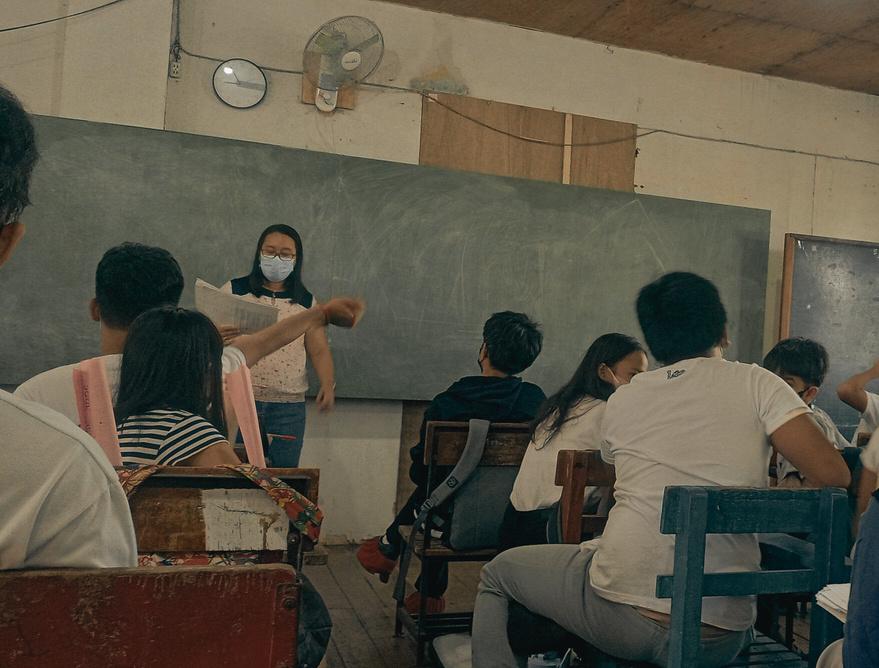

reading and answering the activities of the AP module while monitored by the teacher
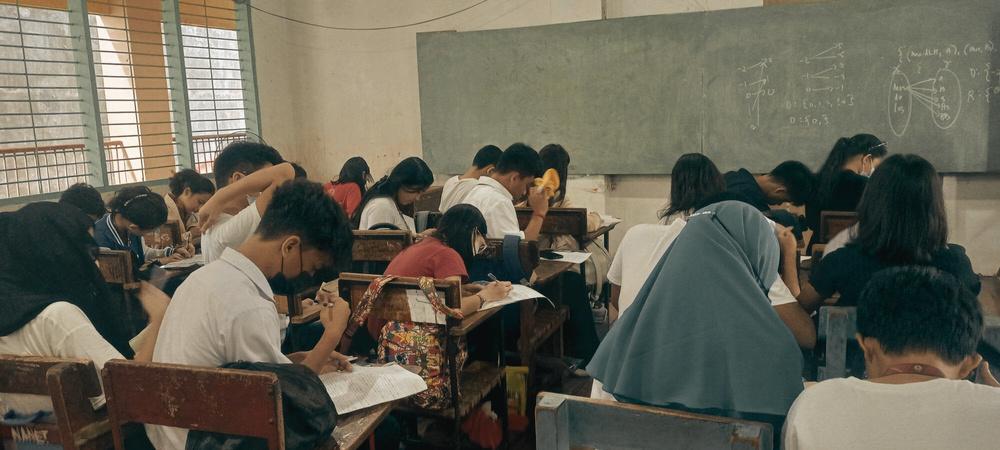
A student raising her hand to ask for clarification
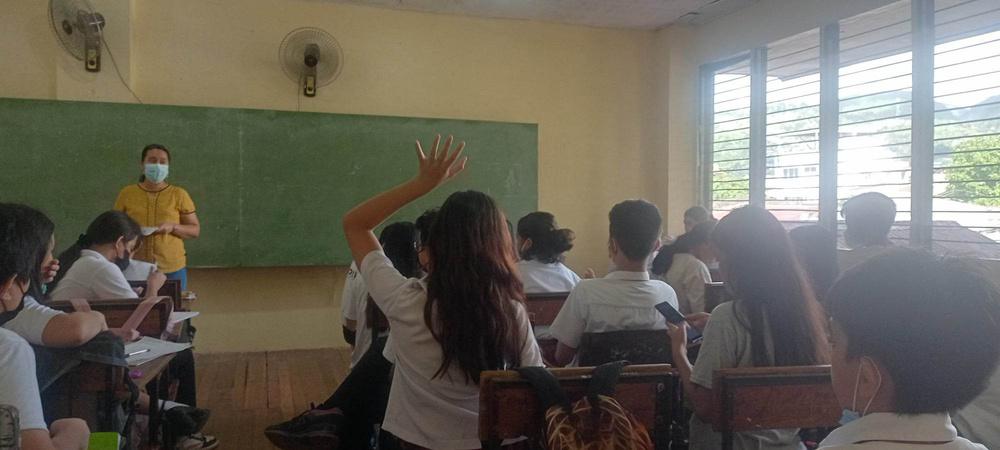
Special Science class Alpha reporter discussing the matters of the Industrial and Scientific Revolution
Special Science class Beta group reporter pasting their visual aids before discussing the topic of the Industrial and Scientific Revolution before the class
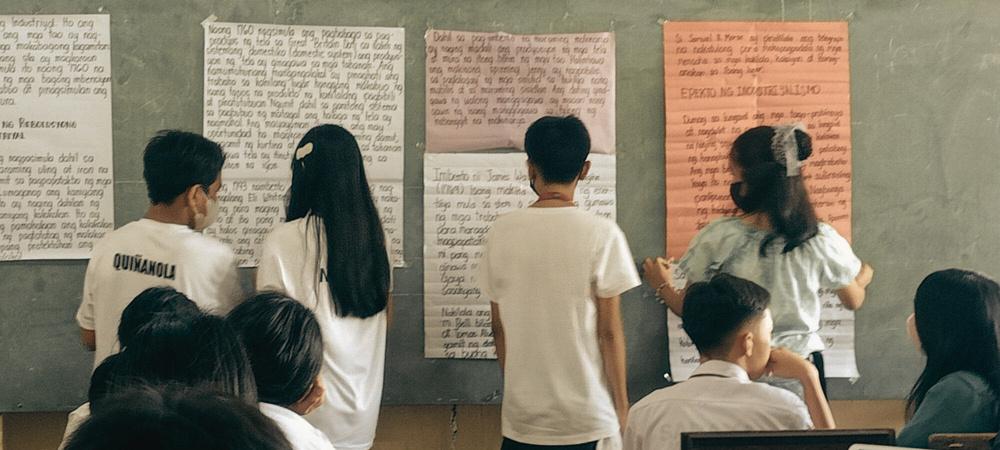
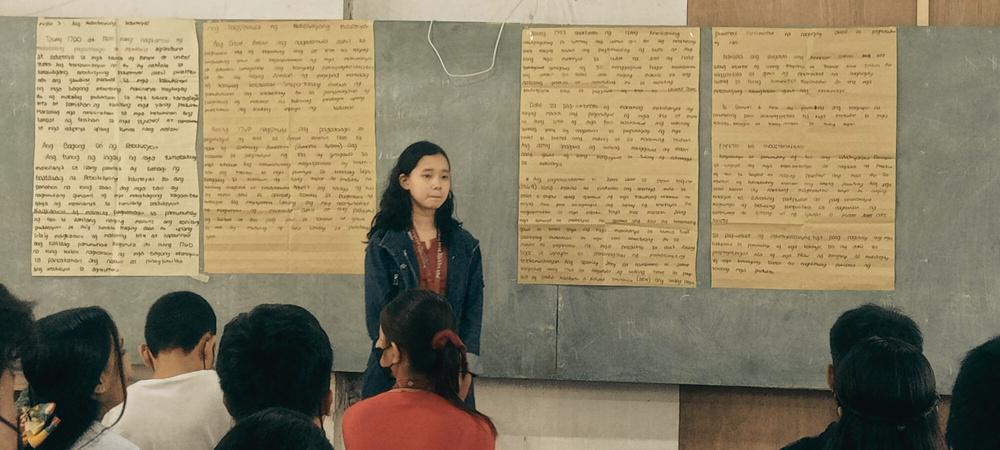
The AP student teacher discussing the previous topics as a review for the upcoming Periodical Exam with the use of visual aid and some pictures
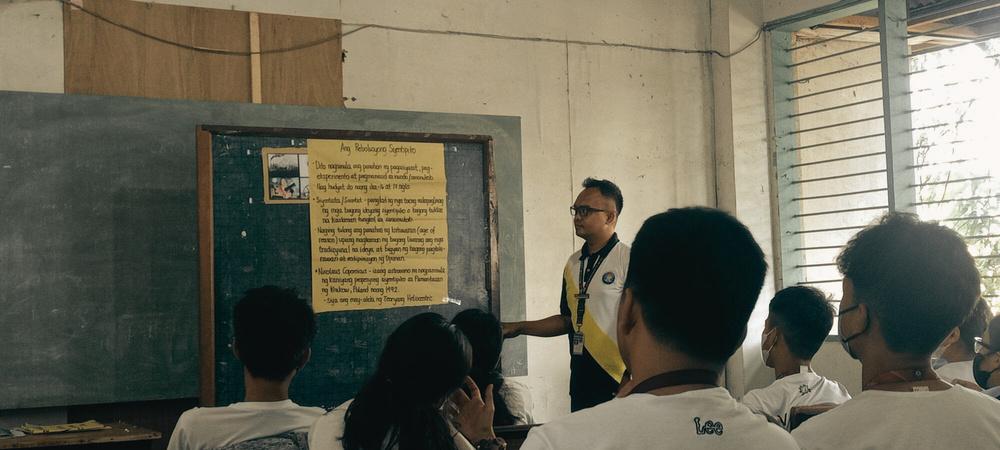
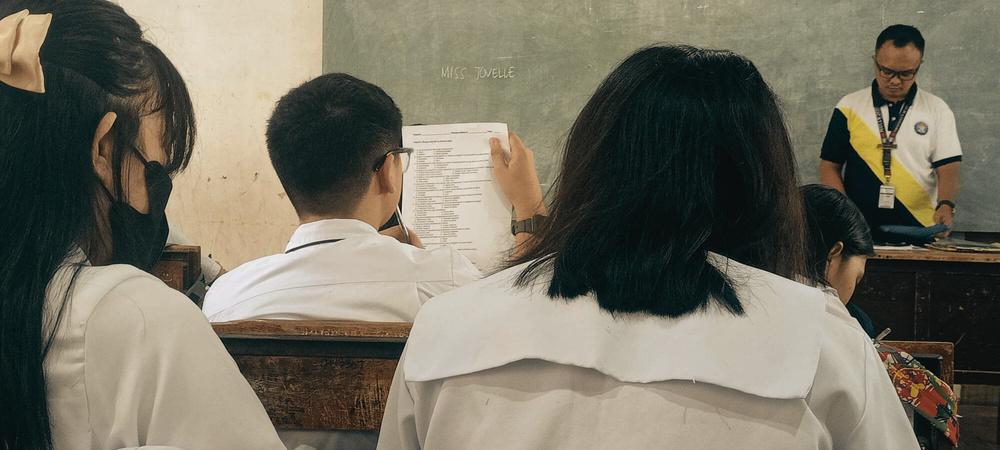
Two students asking for some bond papers from their classmate. The said bond paper is required for the morning’s task, World War 1 Slogan-making.
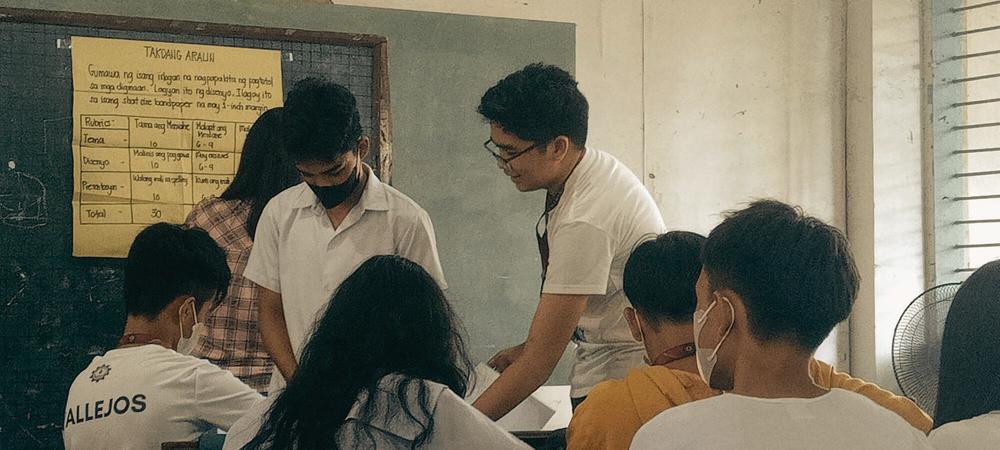
A pair of students moving from their seats to a vacant desk at the front for a more comfortable working space and ventilation.
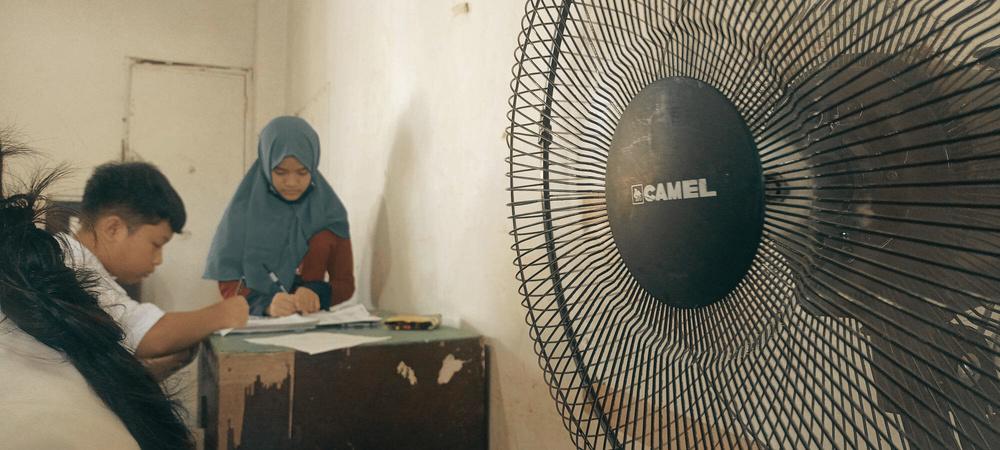

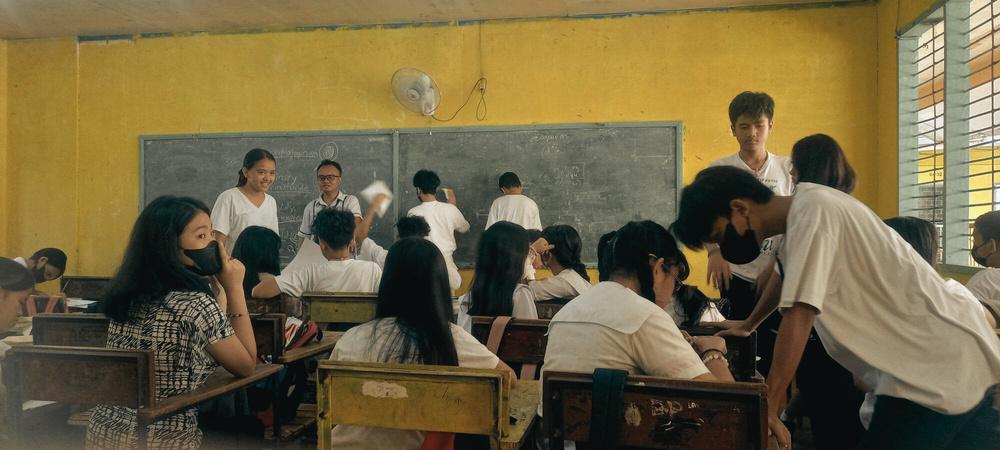
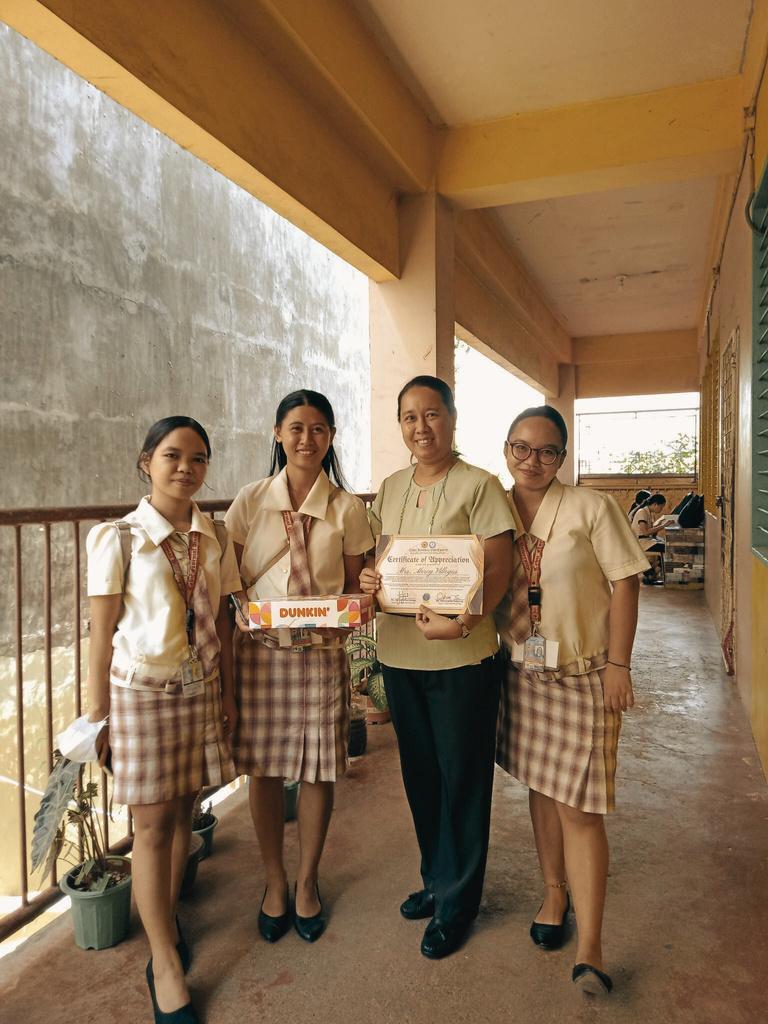
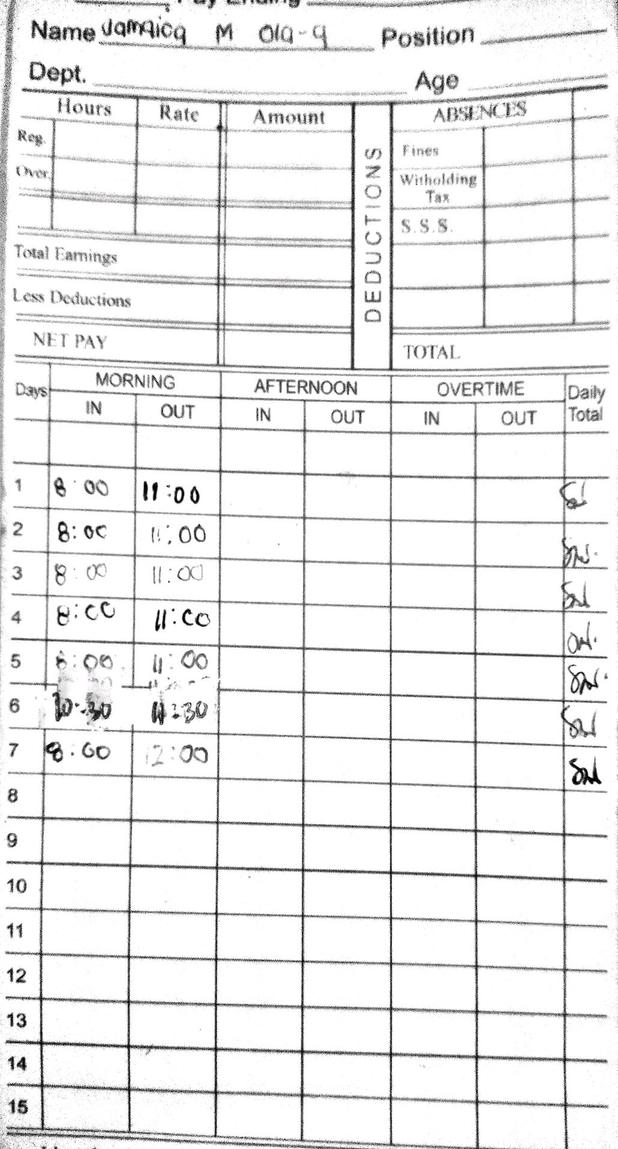
olaajamaica@gmail.com
09208050220
Proactive and enthusiastic educator with a Bachelor's Degree in Secondary Education Major in Social Studies seeking an opportunity to begin a career in teaching Skilled in crafting creative lesson plans that engage students, achieve learning outcomes, and are aligned with national standards. Excellent communication and leadership skills committed to building positive relationships with colleagues, administrators, students, and parents. Possess relevant skills in utilizing technology and other resources to advance instruction and assessment Eager to take on additional responsibilities for continuous professional development
Excellent communication and interpersonal skills
Ability to make creative and engaging lesson plans
Skilled in the use of educational technology, including Google Classroom
Proficient in Microsoft Office (MS Word, MS Powerpoint, MS Excel)
Proficient in Google Suite and Canva
Strong organizational and time-management skills
Excellent journalistic and creative writing skills
Cebu Normal University
Bachelor of Secondary Education Major in Social Studies

Dean's Lister
Don Vicente Rama Memorial National High School Humanities and Social Sciences Graduate With Honors
Don Vicente Rama Memorial National High School Special Science Class Graduate With Honors
Guiwang Elementary School
Business Manager
Ang Suga Publication (Official University
Publication of Cebu Normal University)
Literary Editor
The Pen Reflections (School Publication)
Commission on Election Officer
Don Vicente Rama Memorial National High School
JAMAICA M. OLA-A TEACHER Brgy. Basak San Nicolas, Cebu CityBirthdate: September 23,2001
Religion: Roman Catholic
Citizenship: Filipino
Co-handled 40 staff members of a university publication (2023)
Participated in the 17th Leaders Congress in Cebu City (2023)
Straw Ordinance (Cebu City Youth Development Center) CCYDC participant (2022)
Research Caravan Region 7 Participant (2022)
Regional Schools Press Conference (RSPC) participant (2020, 2019, 2017)
Regional Science and Technology Fair (RSTF) participant (2016)
Regional Festival of Talents (RFOT) participant (2016)
Mrs Yelyn Uy DVRMNHS Teacher 09222133677
Ms. Lorille Antoinettte Mata Editor-in-Chief Ang Suga Publication 09208050220
March 18,2023
MR. RHODERICK ABELLANOSA
Director of Human Resources, Sacred Heart SchoolAteneo de Cebu
H Abellana Street, Canduman Mandaue City
Sir Abellanosa,
I am applying for the vacant position of tenth-grade Social Studies teacher at your Sacred Heart School, Ateneo de Cebu (SHS-ATC) I am geared with skills and knowledge to be a facilitator of the wholistic formation of students. I can craft lesson plans that are aligned with national standards and integrates the academe's core values of Christ-centeredness, Conscience, Competence, Compassion, Character, and promotion of Chinese-Filipino culture in achieving students’ learning outcomes
I have recently graduated Bachelor of Secondary Education majoring in Social Studies with flying colors at Cebu Normal University My leadership experience and community involvement allows me to also build a good rapport with the parents and be a good team player Moreover, I am adept in utilizing educational technology and school resources
Currently, I take review courses to pass the Licensure Board Licensure Exam for Professional Teachers and become a licensed professional by the end of the year
Rest assured that I will contribute to the school’s growth and every Ateneo Hearter’s holistic development.
Jamaica M. Ola-a
